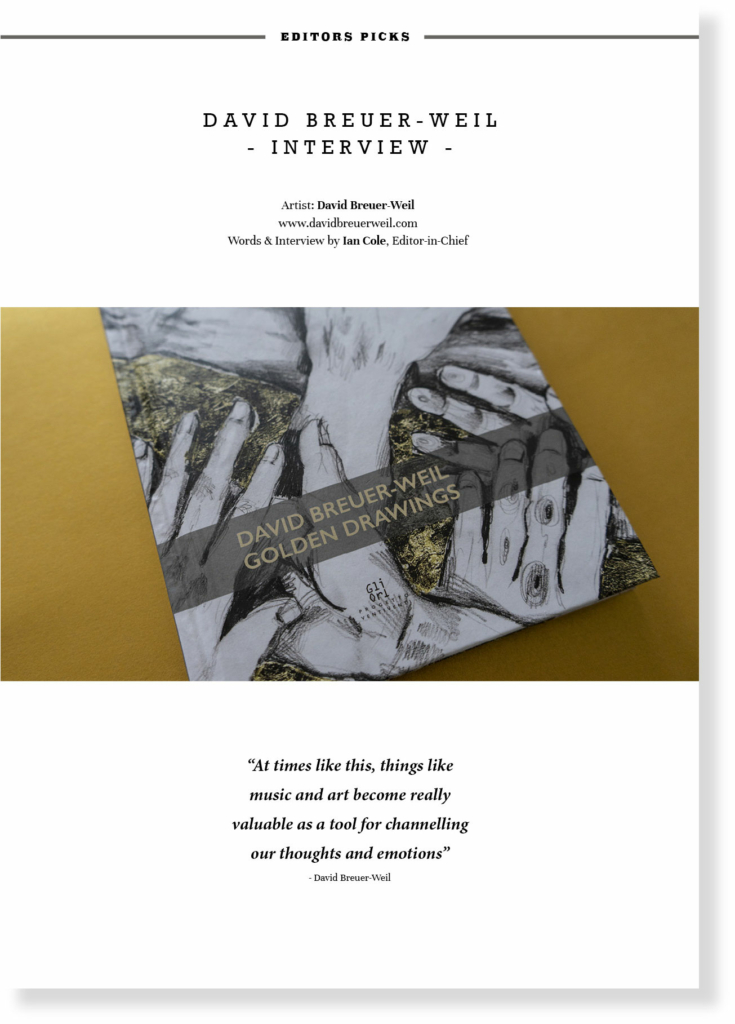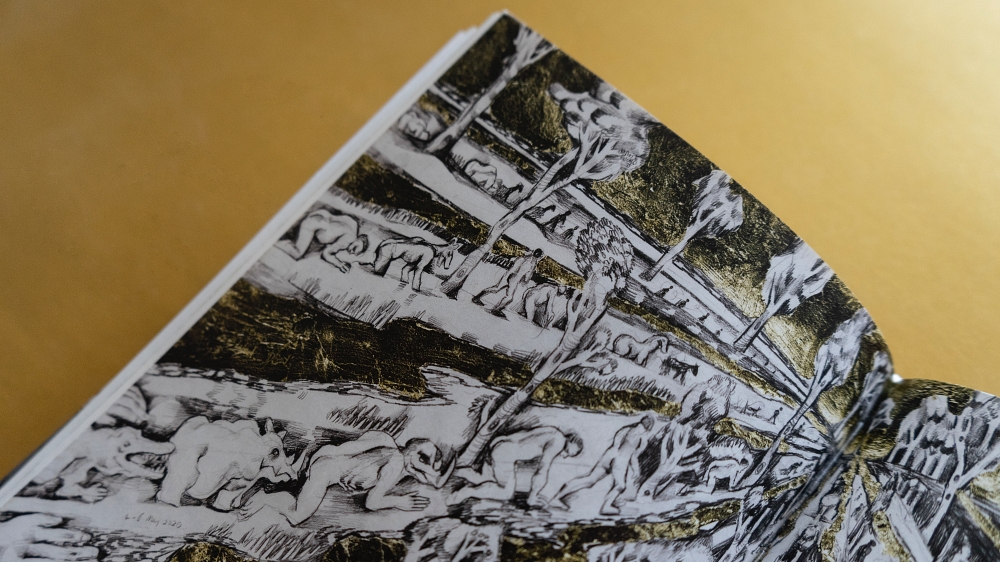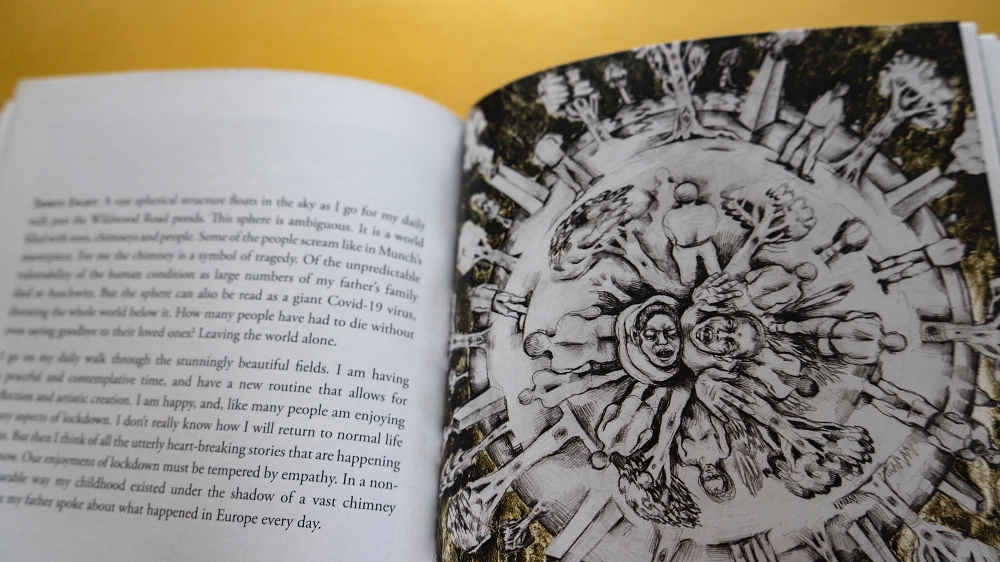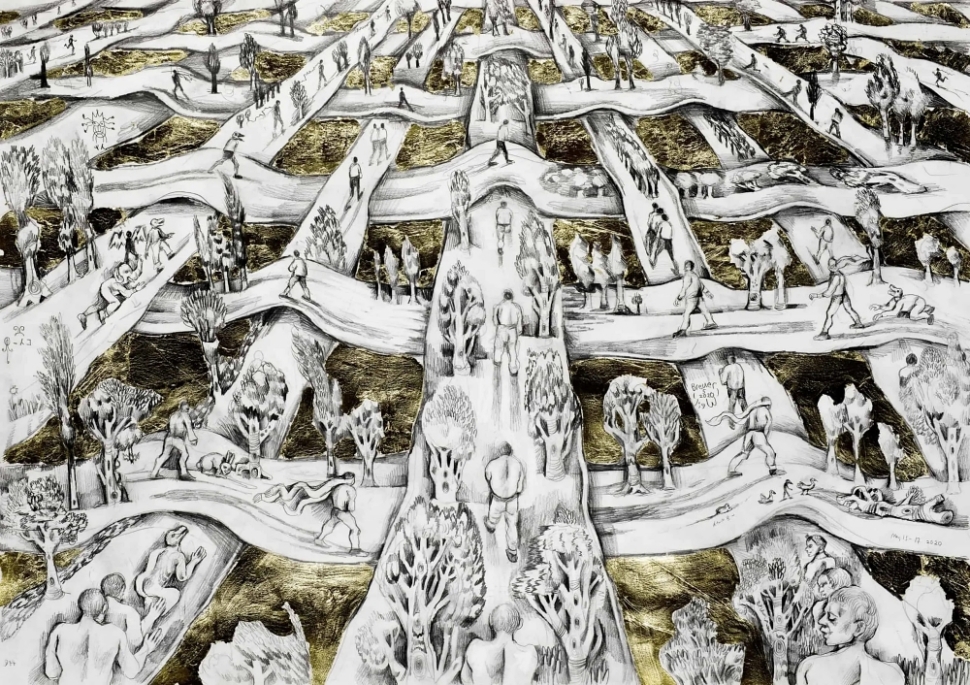David Breuer-Weil is an internationally accomplished artist with a deeply intimate collection of works. Born in London in 1965 and a graduate of Central St Martins and Clare College, Cambridge, Breuer-Weil is considered one of the leading contemporary British sculptors. He is famous for ‘The Project’, huge painted canvases that have been exhibited in the Roundhouse, Camden, the Bargehouse, OXO Tower, the Ben Uri Gallery and Museum and The Vaults, Waterloo. His renowned sculptures have been exhibited at iconic London landmarks including Marble Arch, Hampstead Heath, Hanover Square and Grosvenor Gardens as well as around the world.
In 2020, David contracted Covid-19 and during this time in isolation, he became incredibly active with one particular series, which he later titled ‘Golden Drawings’. The intricacy and level of detail in each picture shows us a world within a world within a world. Was this a reflection of what he was going through? Some are esoteric, unifying, claustrophobic, some rather frightening and in many ways, they depict quite clearly what was going on in the minds of people around the world during a very difficult and historic time.
Sixty-six of these drawings were published in a new book by the artist, also titled ‘Golden Drawings’. A year on from the first lockdown, I spoke with David and interviewed him about these unprecedented times.
Golden Drawings by David Breuer-Weil is available at all good bookshops, on Amazon and you can also visit his website to view more. Interview by Ian Cole. This interview was featured in Client Style #23 which you can purchase in hardcover, softcover & digital editions.
INTERVEW WITH David Breuer-Weil
IC: You describe sitting in front of a piece of paper with a pencil as a form of meditation, where images from the unconscious mind can take form. At what stage in your life did you discover this realisation?
DBW: Normally when you draw, you draw what you see. In my mid-twenties I made a great effort to break into my unconscious. I would create an empire of fictional artists, and these artists would take me over a bit. This was documented in a film, The King Of Nerac a film – a film about that alternative world. (Editors note: The King of Nerac was directed by Annie Sulzberger and premiered in 2015 at the Institute of Contemporary Arts (ICA), London and in New York at the Lincoln Center. This documentary is a visual gateway into the mind of Breuer-Weil, and a must-see).
IC: Do you use this technique outside of your art?
DBW: If I go for a walk I will try to use my mind to penetrate into the trees and flowers, to try to find something divine in the ordinary.
IC: In the book, you talk about how the nations’ “spirituality went inwards” when the lockdown started. Can you elaborate on your thoughts surrounding this?
DBW: During the lockdown, I was engaging more with nature, rather than being in the city and this was making me ask questions about God and why we are here etc. Similarly for the public, many were suddenly thinking about bigger things because they were less distracted and maybe more worried. At times like this things like music and art become really valuable as a tool for channelling our thoughts and emotions.
IC: During the first lockdown restrictions brought on by the global pandemic, the entire planet has been going through the same experience at the same time. How do you think that has ultimately affected people?
DBW: Hopefully, it creates some kind of brotherhood and common purpose and one would hope that it would bring out the natural humanity in people – we are all vulnerable in the same ways – we can all become victims.
IC: What do you dream about?
DBW: History. I dream that I am in different moments in history and they are pretty vivid. I used to share the same dream with my brother, and I made a sculpture about this called Brothers, which was displayed at Marble Arch in 2016. It’s about people sharing one mind and about coming together, resolution and peace. It’s an important theme as a lot of people have brothers.
IC: How old were you when you shared dreams with your brother?
DBW: Aged 12-18 and it still happens on occasion.
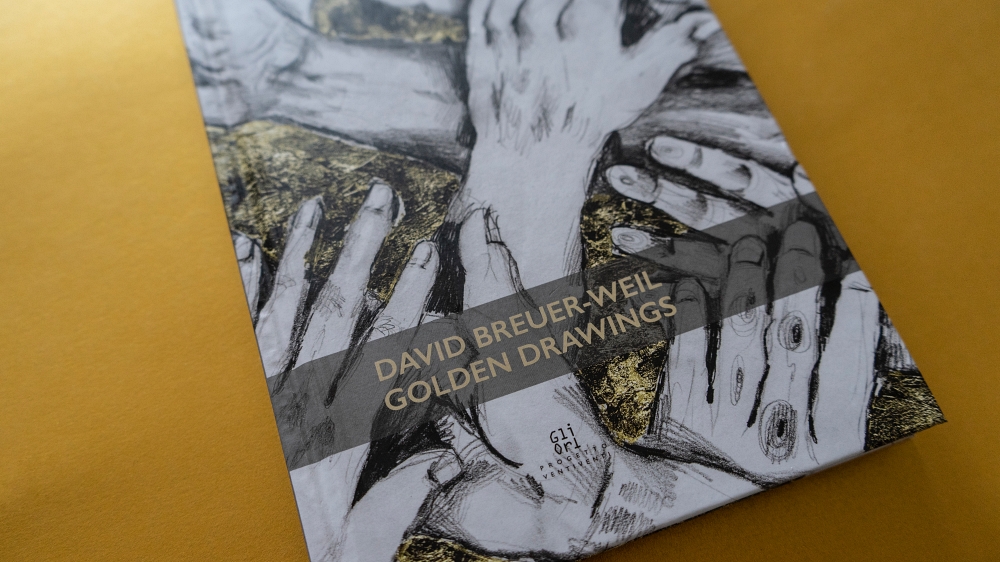
IC: After the first lockdown, I drove to a favourite place of mine, and it just didn’t feel the same. It felt like the old reality had in some way been changed or ‘photoshopped’. But It was in no way improved, just changed somehow. I’ve yet to decide if it’s a good or a bad thing. What have you noticed that is significantly different to what you remember?
DBW: I have a heightened sensitivity towards things. The gold in the background gave a slightly different feel to reality. This is evident in the drawings.
IC: What do you think defines ones reality?
DBW: It’s a world of thought, we only see what we think. Every sense that we have comes from our mind. All we can prove is that we are thinking. What’s real and what is out there – all my work is about the inner world. I see people, landscapes and animals and my drawings are a reflection of that.
IC: I love the cover artwork for the book, did you select the chosen image and is there a particular reason why that drawing?
DBW: The publisher selected the cover image but it was one of my key drawings inspired by the Thursday-night applause for the NHS.
IC: A year on from the beginning of the pandemic, how have you changed as an artist, if at all?
DBW: From an artistic point of view, I have become more active creatively and more intensely. I love to create art that has meaning for ordinary people.
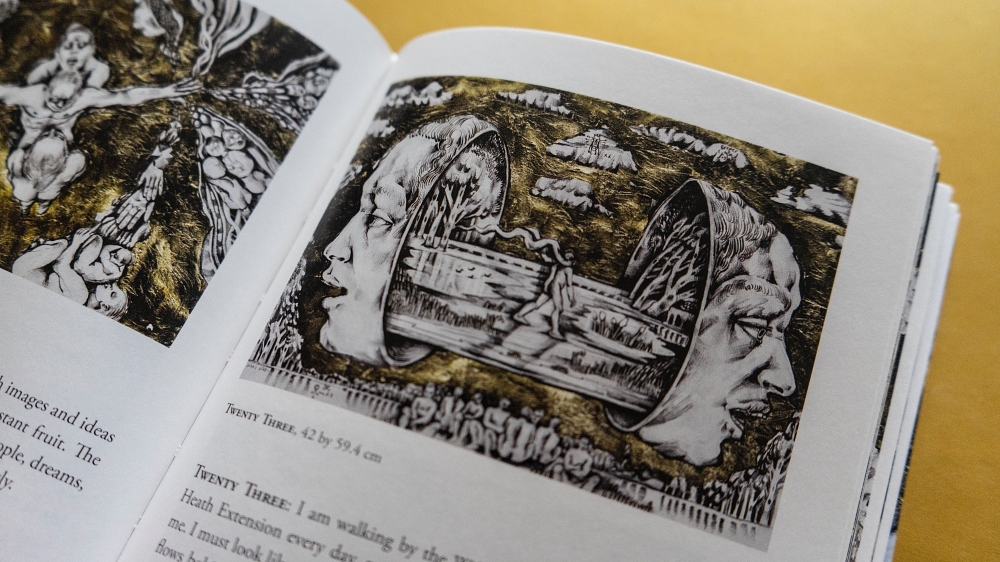
“The intricacy and level of detail in each picture shows us a world within a world within a world.”
